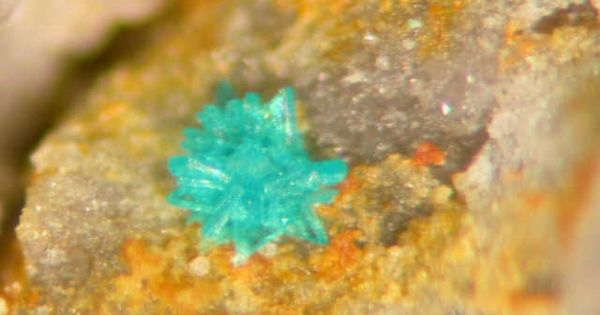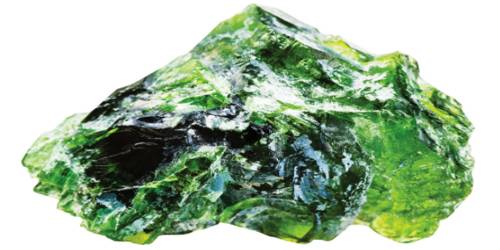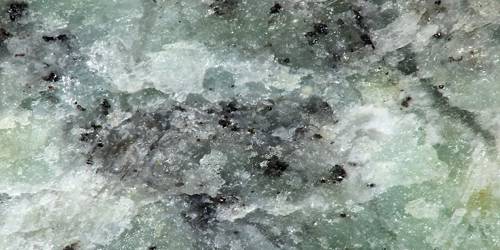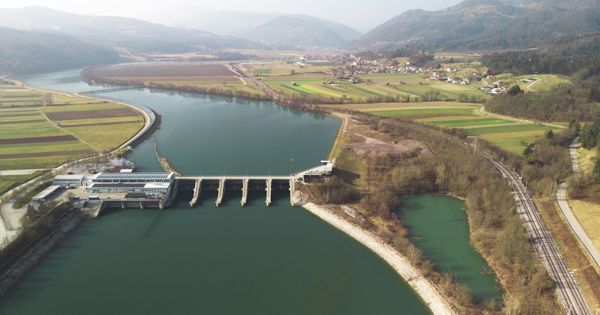Nissonite is a very rare copper phosphate mineral with the formula: Cu2Mg2(PO4)2(OH)2·5H2O. It is a monoclinic-prismatic bluish-green mineral containing copper, hydrogen, magnesium, oxygen, and phosphorus. It can be identified in the field by its color variations, such as blue, blue-green, green, and dark green. It is a very rare mineral found only in the United States and Australia. It occurs in the US in copper deposits and in Australia in sedimentary iron deposits.
Nissonite was discovered in 1966 and was named after William H. Nisson (1912–1965). It is from Llanada copper mine, near Llanada, San Benito Co., California.
General Information
- Category: Phosphate mineral
- Formula: (repeating unit) Cu2Mg2(PO4)2(OH)2·5H2O
- Crystal system: Monoclinic
- Crystal class: Prismatic (2/m) (same H-M symbol)
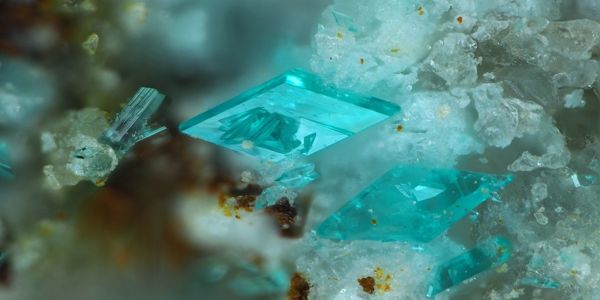
Properties
It crystallizes in the monoclinic crystal system typically as crusts, tabular crystals, and diamond-shaped crystals. The color is blue-green. This mineral has a vitreous–greasy luster, with a greenish-white streak. The fracture on this mineral is uneven – flat surfaces. It has a light green streak, a Mohs hardness of 2.5 and a specific gravity of 2.73. Cleavage is {100} distinct.
- Transparency: Transparent
- Color: Bluish green
- Hardness: 2½ on Mohs scale
- Cleavage: Imperfect/Fair (100)
- Density: 2.73(1) g/cm3 (Measured) and 2.74 g/cm3 (Calculated)
- Specific Gravity: 2.73
Occurrence: A very rare mineral in a copper prospect (Panoche Valley, California, USA); in a Precambrian sedimentary iron deposit (Iron Monarch quarry, Australia). It occurs in an uncommon secondary mineral in the oxidized portions of Pb–Cu deposits.
It was named for William H. Nisson (1912–1965), amateur mineralogist, mineral collector, and dealer, of Petaluma, California, USA, who first noted the mineral.
Association: Malachite, azurite, libethenite, turquoise, chrysocolla, cuprite, barite, calcite, gypsum, riebeckite (Panoche Valley, California, USA); malachite, calcite, hematite, quartz (Iron Monarch quarry, Australia); turquoise, libethenite (Mt. Oxide, Australia).
It is often associated with minerals such as cerussite, anglesite, azurite, leadhillite, brochantite, linarite, and malachite.
Information Source:
